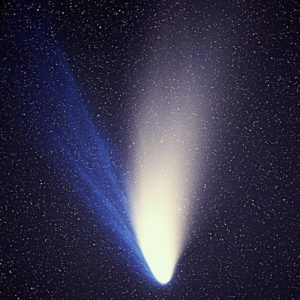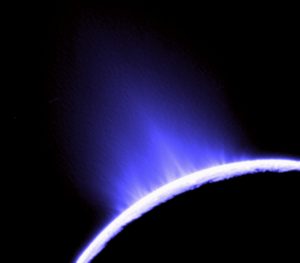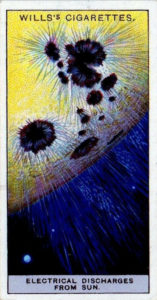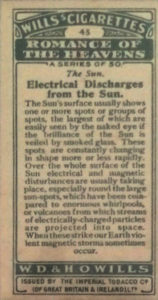
The Electric Universe theory argues that electricity plays a significant and more important role in the Universe, than is generally accepted (see also “Electricity throughout the Universe“). The theory does not dismiss gravity.
As a theory, it offers explanations of various natural and astrophysical phenomena, some of which it claims are better understood without the need for various ad hoc explanations. As with any theory, the Electric Universe makes predictions that have been tested, and is published in both peer-reviewed papers, and popular books.
The Electric Universe theory is interdisciplinary, integrating and supporting subject as diverse as the science (astronomy, geology, physics), with the soft sciences such as ancient history and comparative mythology.
Perhaps not surprisingly, the Electric Universe has also become the target of pseudo-skeptics, whose criticisms have consisted of ad hominems, misunderstanding, misrepresentation, and labeling as pseudoscience.
Key points
- Electricity plays a more significant role in the Universe than is generally accepted
- Gravity plays a significant and important role, in the appropriate regime.
- The Sun and stars are powered electrically by external currents (see Electric Sun theory)
- Planetary surface features such as some craters, dendritic structures and rilles are caused by super-lightning (see electrical scarring)
- Certain cosmic phenomena are electrical in nature, including:
- Comet tails (See comets)
- The plumes of Enceladus
- Martian dust devils
- Galaxy formation and dynamics (circumventing the need for black holes and dark matter)

Alternative Electric Universe theories
Others have described, or had described, their theories as the “Electric Universe”, and while they may share some features in common, may be wholly different too.
- The 1883 pamphlet The Electric Universe: Flashing thoughts for consideration and facts from many sources, by ‘Torpedo’[2]”The Electric Universe: Flashing thoughts for consideration and facts from many sources“, by ‘Torpedo’, publ. 1883 H. Brett, General Printer. Auckland: MDCCCLXXXIII. Online at the Victoria University of Wellington.
- In 1900, Ignatio Tyrrell publishes the book: The Great Electric Universe: Face to Face with God and Facts : Sun, Moon & Planets Populated : Man the Epitome of the Universe, Whither Has He Come, Whither is He Going.[3]Ignatio Tyrrell, The Great Electric Universe: Face to Face with God and Facts: Sun, Moon & Planets Populated: Man the Epitome of the Universe, Whither Has He Come, Whither is He Going (1900) Subject matter unknown
- In 1903, George Woodward Warder’s book, The universe a vast electric organism, included Chapter XV “The Electric Universe is Self-Sustaining and Eternal”.[4]George Woodward Warder, The universe a vast electric organism (1903) Chapter XV “The Electric Universe is Self-Sustaining and Eternal“
- In 1959, Herman Bondi and R.A. Lyttleton proposed of “The possibility of a general excess of charge in the universe”[5]R. A. Lyttleton, H. Bondi, “On the Physical Consequences of a General Excess of Charge” in Proceedings of the Royal Society of London. Series A, Mathematical and Physical Sciences, Vol. 252, No. 1270 (Sep. 29, 1959), pp. 313-333 which Bondi referred to as the Electric Universe.[6]Bondi, H., “The Electric Universe” in Space Astrophysics, Edited by William Liller. New York, McGraw-Hill, 1961., p.179
- In the 1960s, C.E.R. Bruce:
“.. proposed a theory of the evolution of the universe, which will be of interest to electrical engineers. He endeavours to show that electrical discharges have gradually condensed matter from the primordial gas and dust of a general universal atmosphere, first into galaxies, then from the condensed matter of the galaxies into stars. Discharges in the extended atmospheres of stars further condensed the matter, ultimately to allow the formation of planets and satellites”[7]C.E.R. Bruce, “An All-Electric Universe” (1960) in Electrical Review (23 Dec 1960)[8]C.E.R. Bruce, “All-electric theory of the universe” (1971) in Students’ Quarterly Journal Volume: 40, Issue: 160 (June 1970)
- In 1966, James Paton mentioned “the thinking reader who knows that gravitation and electrostatics both involve inverse-square laws of force, but is unaware of ionization, may wonder how stars and galaxies exist in the ‘electric universe’.[9]Paton, J., “Auroral activity during 1965“, The Observatory, Vol. 86, p. 253-254 (1966)
- In 1972, Ralph Juergens proposed an Electric Sun hypothesis which Earl R. Milton says was inspired by several others.
- In 1978, P. C. W. Davies in an article in Nature,[10]P. C. W. Davies, “Electric Universe“, Nature 273, 268 – 269 (1978) described a paper on “The electrically polarized universe” by John Bally and E. R. Harrison in Astrophysics Journal.[11]Bally, J.; Harrison, E. R., “The electrically polarized universe“, Astrophysical Journal, Part 1, vol. 220, Mar. 15, 1978, p. 743, 744. Davies notes: “”In spite of its Velikovskian flavour, the Bally-Harrison electric universe unfortunately does not lead to any obviously important astrophysical consequences”.
- In 1998, Dr. László Körtvélyessy’s book, The Electric Universe [12]Dr. László Körtvélyessy, The Electric Universe, 1998, ISBN 963 8243 19 8 also highlighted the importance of electricity in astronomy, but he does not subscribe to an electric-powered Sun, nor electrical scarring.
In Popular Culture
In 1928, the Imperial Tobacco Company published a series of 50 cigarette cards, “The Romance of the Heavens”. Card No. 43 featured “The Sun. Electrical Discharges from the Sun”. The text reads:
“The Sun’s surface usually shows one or more spots or groups of spots, the largest of which are easily seen by the naked eye if the brilliance of the Sun is veiled by smoked glass. These spots are constantly changing in shape more or less rapidly. Over the whole surface of the Sun electrical and magnetic disturbances are usually taking place, especially round the large sun-spots, which have been compared to enormous whirlpools, or volcanoes from which streams of electrically-charged particles are projected into space. When these strike our Earth, violent magnetic storms sometimes occurs.”[13]W.D. & H.O. Wills, Issued in 1928 by the Imperial Tobacco Company
Articles and papers
Peer reviewed
- Thornhill, W., “The Z-Pinch Morphology of Supernova 1987A and Electric Stars“, IEEE Transactions on Plasma Science, Aug. 2007, Volume: 35, Issue: 4, Part 1, Page(s): 832-844
- Ransom, C.J.; Thornhill, W., “Plasma-Generated Craters and Spherules“, IEEE Transactions on Plasma Science, Volume 35, Issue 4, Aug. 2007 Page(s):828 – 831
Academic conference reports
- C. J. Ransom, M. Acheson, “The Plasma plus Gravity Universe May Not Need Dark Matter“, 2007 IEEE Pulsed Power and Plasma Science Conference, 34th Annual ICOPS, June 17th, 2007, Albuquerque, NM, 5P42
- Thornhill, W.W., “The Electrical Nature of Comets“, IEEE 34th International Conference on Plasma Science, 2007. ICOPS 2007., Publication Date: 17-22 June 2007, On page(s): 1000-1000
- Ransom, C. J., & Wallace Thornhill, “Laboratory Reproduction of Possible Solar System Plasma Effects,” Conference Record, 33rd IEEE International Conference on Plasma Science, p 370, 2006.
- Ransom, C. J. & Wal Thornhill, “Plasma Generated Spherules“, Bulletin of the American Physical Society, Vol. 50, #2, April 2005, p. 78.
Scholarly
- C.E.R. Bruce, “An All-Electric Universe”. Elect. Rev., 162, pp. 1070-1075, 23 Dec. 1960.
- C.E.R. Bruce, “An All-Electric Universe”. Elect.Rev., 168, p. 20, 6 Jan. 1961.
- C.E.R. Bruce, “An All-Electric Universe”, Elect.Rev., 169, p. 104, 20 Jan. 1961.
- C.E.R. Bruce, “An All-Electric Universe”. Elect.Rev., 169, p. 332, 24 Feb. 1961
- Thornhill, W., “The Electric Universe”, SIS C&C Review v2000 No.1
- Thornhill, W., “The Electric Universe”, SIS C&C Review v2002 No.2
- Thornhill, W., “Stars in an Electric Universe”, Aeon vol.5 No.5 (Jan 2000)
References
| ↑1 | ”Electrically Charged Particles Found in Enceladus’ Plumes“, Universe Today, 24 Dec, 2015 |
|---|---|
| ↑2 | ”The Electric Universe: Flashing thoughts for consideration and facts from many sources“, by ‘Torpedo’, publ. 1883 H. Brett, General Printer. Auckland: MDCCCLXXXIII. Online at the Victoria University of Wellington. |
| ↑3 | Ignatio Tyrrell, The Great Electric Universe: Face to Face with God and Facts: Sun, Moon & Planets Populated: Man the Epitome of the Universe, Whither Has He Come, Whither is He Going (1900) |
| ↑4 | George Woodward Warder, The universe a vast electric organism (1903) Chapter XV “The Electric Universe is Self-Sustaining and Eternal“ |
| ↑5 | R. A. Lyttleton, H. Bondi, “On the Physical Consequences of a General Excess of Charge” in Proceedings of the Royal Society of London. Series A, Mathematical and Physical Sciences, Vol. 252, No. 1270 (Sep. 29, 1959), pp. 313-333 |
| ↑6 | Bondi, H., “The Electric Universe” in Space Astrophysics, Edited by William Liller. New York, McGraw-Hill, 1961., p.179 |
| ↑7 | C.E.R. Bruce, “An All-Electric Universe” (1960) in Electrical Review (23 Dec 1960) |
| ↑8 | C.E.R. Bruce, “All-electric theory of the universe” (1971) in Students’ Quarterly Journal Volume: 40, Issue: 160 (June 1970) |
| ↑9 | Paton, J., “Auroral activity during 1965“, The Observatory, Vol. 86, p. 253-254 (1966) |
| ↑10 | P. C. W. Davies, “Electric Universe“, Nature 273, 268 – 269 (1978) |
| ↑11 | Bally, J.; Harrison, E. R., “The electrically polarized universe“, Astrophysical Journal, Part 1, vol. 220, Mar. 15, 1978, p. 743, 744. |
| ↑12 | Dr. László Körtvélyessy, The Electric Universe, 1998, ISBN 963 8243 19 8 |
| ↑13 | W.D. & H.O. Wills, Issued in 1928 by the Imperial Tobacco Company |

